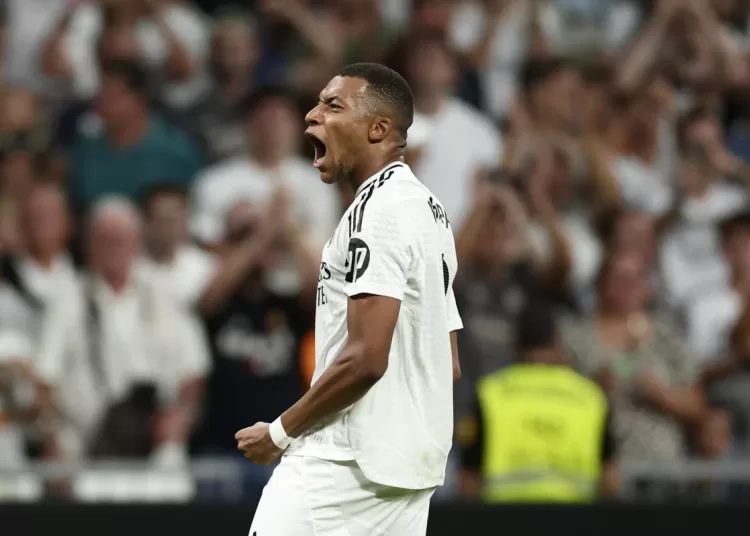GENEVA – The new Champions League format kicks off Tuesday after more than six years of planning, one failed proposal and one Super League launch fiasco.
In the end, storied clubs who pushed for change from UEFA and created turmoil in European soccer got most of what they wanted: More teams, more games and more of them against strong opponents, more money.
Now there are 36 teams instead of 32, each playing eight games instead of six, against eight different opponents instead of three.
Opening night Tuesday hits a high note.
Kylian Mbappé starts his quest for a first title with his third club, the record 15-time European champion Real Madrid that hosts Stuttgart. Mbappé reached the semifinals in 2017 with Monaco and was a beaten finalist in 2020 with Paris Saint-Germain.
Ultimately, all 36 teams will be ranked from top to bottom in a single league standings that finishes in January instead of traditional four-team groups that would end in December.
UEFA has cleared its midweek schedule to relaunch the marquee club event over back-to-back-to-back nights – six games each through Thursday.
The league phase through January is quite simple. Each team plays a balanced schedule of eight games — four at home, four on the road — earning three points for a win and one for a draw.
Eight different opponents were allocated in the draw last month by a software program picking two teams from each of four seeding pots. Seeding was based on a team’s UEFA ranking over five years of results in European competitions.
Recent champions Madrid, Manchester City and Bayern Munich were among the top seeds. Low-ranked pot four included debutants Girona and Brest, and long-time absentees Aston Villa, Bologna and Stuttgart.
Advancing to the knockout phase is more complex, and UEFA suggested teams will need eight points from eight games to stay involved.
The top eight in the standings on Jan. 29 go direct to the round of 16 in March seeded Nos. 1-8.
Teams placed ninth to 24th in the standings enter a knockout playoffs round in February. Teams 9-16 will be seeded in the draw and play second legs at home against teams who placed from 17-24. The bottom 12 teams in the standings are eliminated.
The eight playoff winners advance as unseeded teams in the round of 16, which will be drawn into a set bracket like a tennis tournament. That replaces the old system of separate draws for the quarterfinals and semifinals.
The new era starts with two 1645 GMT early kickoffs featuring three European Cup winners from the 1980s — Juventus (1985) hosts PSV Eindhoven (1988) and Aston Villa (1982) travels to Young Boys. Both are first-time fixtures between the teams.
Also playing are the four teams with the most European Cup and Champions League titles in their 70-season history.
While Madrid plays Stuttgart, six-time winner Bayern hosts Dinamo Zagreb looking to extend a 40-game, seven-year unbeaten run in group stages.
The standout pairing is AC Milan against Liverpool at San Siro. Milan won the last of its seven European titles in the 2007 final against Liverpool. That was a rematch of the 2005 “Miracle of Istanbul” final when Liverpool rallied from 3-0 down at half time to win the fifth of its six titles.






Discussion about this post